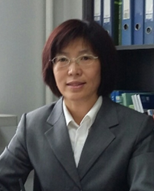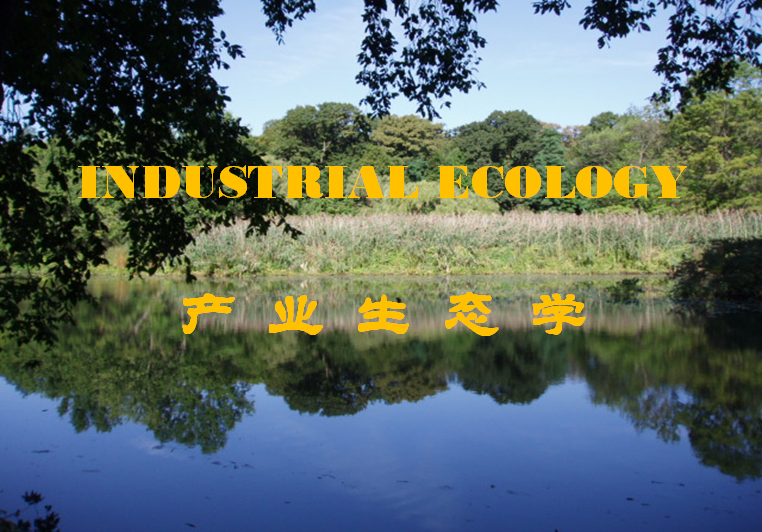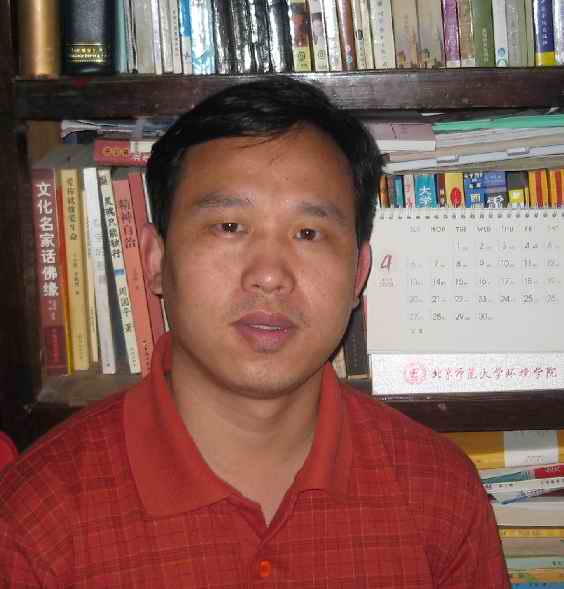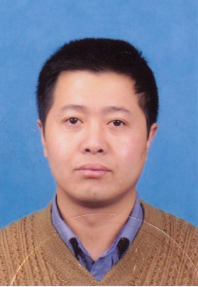
产业生态学 Industrial ecology课程简介:前往报名学习

产业生态学以人类与自然环境的作用界面—产业系统作为研究对象,借助优化产业系统来协调人类与环境间的关系。本课程为全英文授课并配有中英文双语字幕。
播放:2031次,课程ID:4231528

产业生态学以人类与自然环境的作用界面—产业系统作为研究对象,借助优化产业系统来协调人类与环境间的关系。本课程为全英文授课并配有中英文双语字幕。
--1-0 Key Question and Contents 核心议题和内容设置
--1-1How does an Environmental Problem Occur 环境问题的产生
--1-2 What is the Role of IS 产业的角色
--1-3 How does IE Challenge Environmental Problem 产业生态学如何应对环境挑战
--1-4 How IE is Performed 如何展开教学活动
--1-5 Topic for disscussion and Homework 研讨议题与作业
--1-6 Clues for Homework 作业示例
--After class test 1 课后测1
--2-0 Review and Contents 回顾与内容设置
--2-1 How to manage the Sustainable Develoment 如何进行可持续发展管理
--2-2 The concept of IE 产业生态学概念
--2-3 The Role of IE in Science Research and Career 产业生态学在科学、研究和事业中的作用
--2.4 Topic for Discussion and Reference 研讨议题和推荐资源
--After class test 2 课后测2
--3-0 Review and Contents 回顾与内容设置
--3-1 A Review of Similarity Theory 相对论回顾
--3-2 A Review of Biological Ecology 自然生态系统回顾
--3-3 Comparability of IS and ES 产业系统和自然系统的对比
--3-4 Main Feature of IS 产业系统的主要特征
--3-5 Topic for Disscussion and Reference 研讨议题和推荐资源
--After class test 3 课后测3
--4-0 Key Question and Contents 核心议题和内容设置
--4-1 How to Define a Product and a Service 如何界定“产品”和“服务”
--4-2 General Introduction of LCA 生命周期评价概述
--4-3 Goal and Scope Definition 目的和范围的界定
--After class test 4 课后测4
--5-0 Review and Key Questions 内容回顾与核心议题
--5-1 Preparing for Data Collection 数据收集准备
--5-2 Data Collection 数据收集
--5-3 Data Calculation 数据计算
--5-4 LCI Report, Reference and Topic for Discussion 生命周期清单分析报告,推荐资源和研讨议题
--5-5 Classroom Sharing 课堂分享实录
--After class test 5 课后测5
--6-0 Impacr Assessment and Interpretation 影响评价与解释概述
--6-1 Selection of Impact Categories, Category Indicators and Characterization Models 环境影响类型、类别指标、特征模型
--6-2 Classification and Characterization 分类和表征
--6-3 Interpretation and Analysis 如何进行解释和分析
--6-4 Report, Reference and Topic for Discussion 报告,推荐资源与研讨议题
--6-5 Classroom Sharing 课堂分享实录
--After class test 6 课后测6
--7-0 Key Question and Contents 核心议题与内容设置
--7-1 General Introduction of Material Flows 物质流动概述
--7-2 The Original Dynamic Framework of SFA 物质人为流动动态分析原始框架
--7-3 The Improved Dynamic Model for SFA 物质人为流动动力分析改进框架
--7-4 Some Rules and a Case Study 物质人为流动若干规律和案例
--7-5 References and Students Topics 推荐资源和研讨议题
--After class test 7 课后测7
--8-0 Review and Key Questions 内容回顾与核心议题 Review and Key Questions
--8-1 How to Select Material 物质选择
--8-2 STAF Model and a Case Study for Lead STAF框架和铅的案例分析
--8-3 Class Discussion, Homework and References 研讨议题,作业和推荐资源
--8-4 Classroom Sharing 课堂分享实录
--After class test 8 课后测8
--9-0 Review and Key Questions 内容回顾与核心议题
--9-1 Social Effect of Anthropogenic Flows —In-use Stock 物质人为流动社会效应—物质流的使用蓄积分析
--9-2 Social Effect of Anthropogenic Flows —A Case for Lead In-use Stock 物质人为流动的社会效应—铅使用蓄积案例
--9-3 Environmental Effect of Anthropogenic Flows—Environmental Stock of Emission物质人为流动的环境效应—环境排放蓄积
--9-4 Main Application of MFA 物质流动分析的应用
--9-5 New Progress on MFA 物质流动分析进展
--After class test 9 课后测9
--10-0 Review and Key Question 内容回顾与核心议题
--10-1 What is DfE 生态设计概念
--10-2 How to Select the Material 材料选择
--10-3 Other Measures for Saving Material 其他节约材料的措施
--After class test 10 课后测10
--11-0 Review and Key Questions 内容回顾与核心议题
--11-1 Industrial Process Design and Operation 产业工艺和设备运行的设计
--11-2 Design for Energy Efficiency 能源效率的设计
--11-3 Design for Delivery of Products 产品运输的设计
--11-4 Design for Product Uses and EOL Treatment 产品使用和报废后处理的设计
--11-5 Design for System Optimization and Student Topics 系统优化设计和研讨议题
--11-6 Classroom Sharing 课堂分享实录
--After class test 11 课后测11
--12-0 Review and Key Questions 内容回顾与核心议题
--12-1 Distinguishing the Weakest Subsystem 识别最弱子系统
--12-2 Green Corporations Management 绿色企业管理
--12-3 Eco-region Contruction 生态区域构建
--12-4 Summary, References and student Topic 小结,推荐资料和议题
--12-5 Classroom Sharing 课堂分享实录
--After class test 12 课后测12
--13-0 Review and Key Questions 内容回顾和核心议题
--13-1 The importance of Indicator and Metrics 定性指标和定量指标的重要性
--13-2 Metrics System Development 定量指标体系的建立
--13-3 Hierachical Metrics Systems 多级定量指标体系
--13-4 Topics for Discussion and References 研讨议题和推荐资源
--13-5 Classroom Sharing 课堂分享实录
--After class test 13 课后测13
--14-1Overall Review 课程总结
--Final exam 期末测试

我国最早开展产业生态学研究的学者之一。自2000年攻读博士以来,一直持续开展产业生态学、循环经济、污染物源头防治方面的研究工作。曾于2004年受邀耶鲁大学产业生态研究中心做博士后、Henry Luce 研究学者,在产业生态研究中心进行物质循环流动基础研究。特别是从模型构建,到基本规律研究和应用实践,获得了系列重要成果,其中物质人为流动成为本课程中第7-9讲核心内容;与此同时,在北京师范大学所完成的系列产业生态规划研究与实践,构成了本课程诸多应用实践的重要案例。One of the earliest Chinese scholars in field of industrial ecology. Since she studied for Ph. D. in 2000, she has been working on study of industrial ecology, circular economy and source control of environmental pollutants. In 2004, she was invited to visit Yale University with a support from Henry Luce Foundation and worked as a postdoctoral associate and a senior researcher at Forestry & Environmental Studies (F&ES). She joined in the STAF group at the Center for Industrial Ecology and made a comprehensive study on the material anthropogenic flows. Especially she successfully completed comprehensive research on Lead from the MFA framework settlement to the basic rules derivation and achieved a series of important results, in which the part for material an

教授,博导,环境科学博士,加拿大Regina大学博士后,从事流域水资源应用与管理研究。现于环境学院工作,可为本课程提供流域产业生态规划实践案例。Professor, Supervisor of Ph. D. in Environmental Science. He had been a postdoctoral associate at University of Regina in Canada. He has been engaged in research on watershed water resources management. Now he works at School of Environment of BNU. He provides some practises and cases for watershed eco-industrial planning for this course.

教授,博导,环境工程博士,曾在澳大利亚CSIRO和Flinders大学做访问学者,主持完成十余项重要科研项目,环境学院副院长,从事污泥资源化、流域综合调控与生态修复工程研究。承担本课程中生态工程应用案例研讨。Professor and supervisor of Ph.D in Environmental Engineering. He had been a visiting scholar at CSIRO and Flinders University in Australia. He presided over more than ten important scientific research programs and present as an associate dean of the school of environment at BNU. He has been engaged in sludge resource utilization, integrated watershed regulation and ecological restoration engineering research. He is responsible for the application and discussion of ecological engineering in this course.